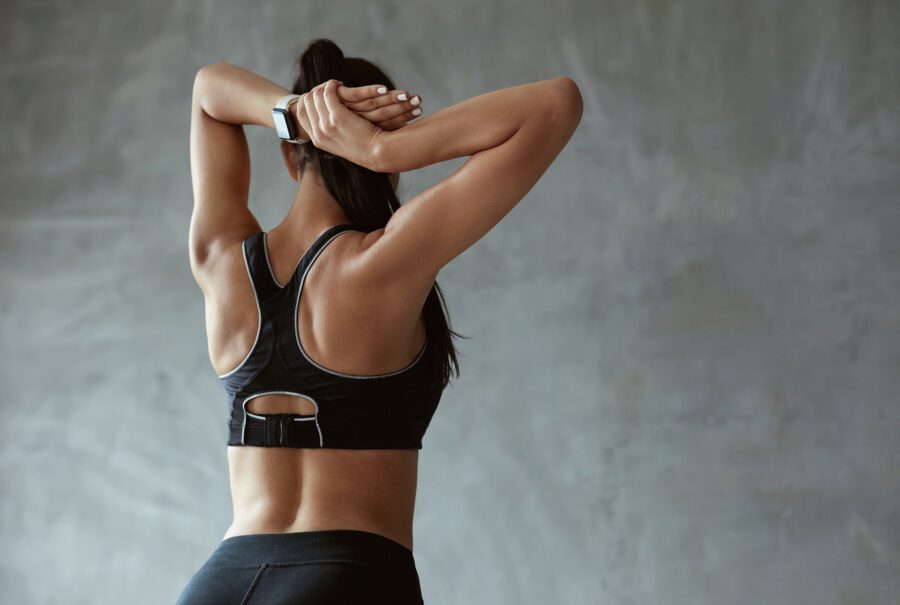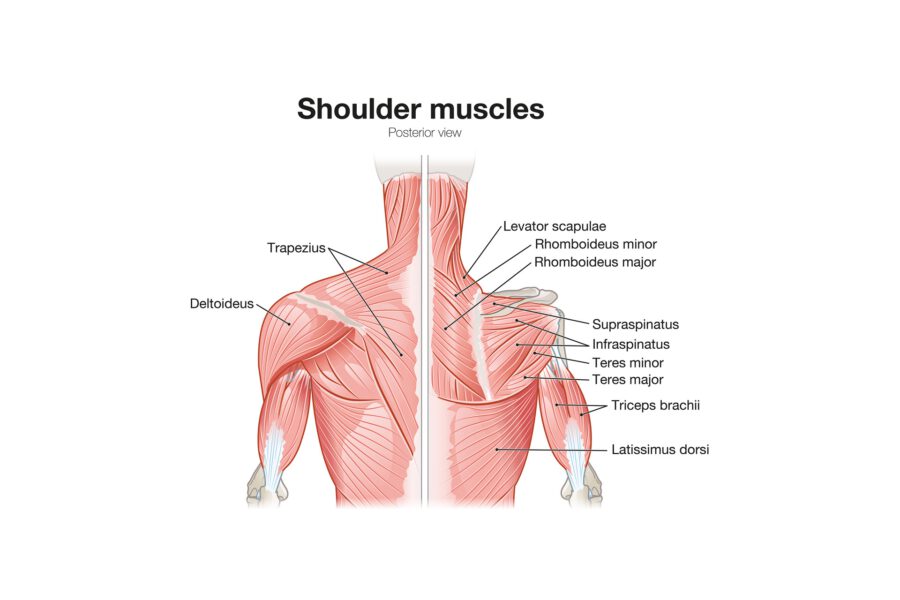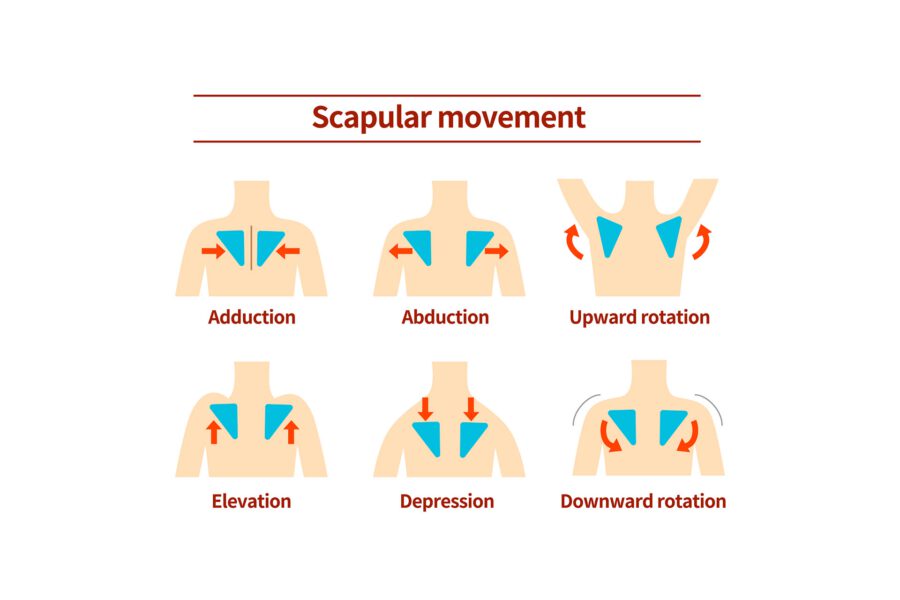8 Underrated Tips to Improve Shoulder Strength and Mobility
The shoulder joint is one of the most commonly injured areas of the body. Its wide range of motion makes it highly functional but also more vulnerable to damage. Injuries can result from high-impact activities, such as contact sports, repetitive overhead movements, poor posture, or the natural wear and tear associated with aging. Without proper strength, mobility, and stability, the shoulder is particularly prone to issues such as impingements, dislocations, and rotator cuff tears.
Yet many fitness enthusiasts overlook the smaller exercises and habits that keep shoulders strong, mobile, and pain-free. Whether you’re a beginner or an advanced athlete, investing some time in developing your shoulder strength and mobility can yield significant benefits.
This article will discuss underrated tips to boost shoulder strength and mobility, helping you build stronger, healthier shoulders that move and perform more effectively.
The main shoulder joint is called the glenohumeral joint. It’s a ball-and-socket joint where the head of the upper arm bone (humerus) fits into a shallow socket on the shoulder blade (glenoid cavity of the scapula). This shallow design allows the shoulder the widest range of motion of any joint in the body, but it also makes it less stable.
The shoulder relies heavily on muscles, tendons, ligaments, and the joint capsule for stability.
Major muscles work together to move and stabilize the shoulder:
- Deltoids: Cover the shoulder; three heads (front, side, rear); lift the arm in different directions.
- Rotator Cuff (Supraspinatus, Infraspinatus, Teres Minor, Subscapularis): Small muscles that stabilize the shoulder joint and control rotation.
- Trapezius: Upper traps lift the shoulders; middle and lower traps stabilize and move the shoulder blades.
- Serratus Anterior: Helps move the shoulder blade forward and upward; essential for overhead motion.
- Rhomboids: Pull the shoulder blades back; key for posture and stability.
- Pectoralis Major and Minor: Move the arm across the body and assist in scapular control. Latissimus Dorsi: Drives pulling movements and supports shoulder extension and rotation.
For building strength and developing broader shoulders, we listed down the top three best and worst shoulder workouts.
Building shoulder strength isn’t just about heavy overhead presses or endless lateral raises. It’s also about strengthening the foundations of your shoulder joint and using smart techniques.
Here are some underrated tips to improve shoulder strength:
When we talk about shoulder strength, we usually picture the deltoids or big pressing muscles. But equally important are the muscles that hold your scapula (shoulder blade) in place, like the serratus anterior, trapezius, and rhomboids.
Think of your scapula as the foundation for all arm movements. If this foundation is weak or unstable, your shoulder can’t exert strength efficiently. In fact, research indicates that when the scapula fails to stabilize, shoulder function becomes inefficient, resulting in reduced performance and an increased risk of injury.
Scapular stabilizer exercises:
Even simply practicing good posture and pinching your shoulder blades back during workouts can help wake up these muscles. If your shoulder blade muscles aren’t doing their job, the smaller muscles down your arm have to overwork, which leads to extra stress on the elbows and wrists.
Your rotator cuff muscles stabilize the shoulder joint and assist in rotation. However, they are often overlooked in traditional training and frequently overshadowed by exercises targeting the delts and pecs. This particular situation usually leads to muscle imbalances, where strong internal rotators are paired with weak external rotators.
How to do it?
- Grab a light resistance band or set up a cable machine. Choose a very light resistance to start.
- Anchor the band or adjust the cable to elbow height. Secure the band to a stable object or set the cable pulley around the waist or elbow height.
- Stand sideways to the anchor point. Your working arm should be farthest from the anchor.
- Hold the band with your elbow bent at a 90-degree angle. Tuck your elbow close to your side throughout the movement.
- Rotate your forearm outward. Move your hand away from your body while keeping your elbow glued to your side.
- Control the motion. Slowly return to the starting position after each rep. Don't let the band snap you back.
- Perform 10–15 slow, controlled reps per side. Focus on feeling the muscles of the rotator cuff working.
- Keep good posture. Stand tall, keep your shoulders relaxed, and don’t lean or twist your torso.
When performing shoulder exercises, pay special attention to the negative phase (eccentric) or the lowering and lengthening part of the movement. For example, in a shoulder press, the eccentric is when you slowly lower the weight back down; in a pull-up, it’s when you lower yourself from the bar.
When muscles contract and lengthen, as seen in eccentric movements, the muscle fibers build strength more quickly and strengthen the connective tissues. Studies have found that eccentric training can lead to slightly greater muscle growth compared to standard lifting alone . This means more hypertrophy and potentially more strength. Eccentric movements also put a healthy stress on tendons, prompting them to adapt and become more resilient (which is why eccentrics are often used in injury rehab for tendons).
How to do it? Try taking 4-5 seconds to lower on your next set of overhead presses or lateral raises. Or incorporate negative pull-ups (jump up or use a step to get your chin over the bar, then slowly lower yourself down).
The increase in time under tension can enhance the stimulus for muscle growth, but it may also increase post-workout muscle soreness. Over time, controlling the negative will strengthen your shoulders and make them more resilient to injury.
To build strong, balanced shoulders, you need to train the back side just as much as the front. Many gym-goers overdo push-ups, bench presses, and front delt work, leading to tight chest muscles and weak rear shoulders.
A key tip is to focus on strengthening the rear delts, rhomboids, and lower traps, which are the muscles that pull your shoulder blades back.
Strengthening these muscles improves posture, enhances shoulder strength, and helps balance the joint.
One of the best exercises for this is the face pull. It targets the rear delts, lower traps, and rotator cuff, helping pull your shoulders back into proper alignment.
Other great exercises for strengthening rear delts and postural muscles:
Add these exercises to your routine, especially at the end of workouts as “postural rehab.” Stronger rear delts will make your shoulders feel more stable, improve your posture, and even boost your pressing strength. Simply put: your shoulders are only as strong as their weakest link, so don’t neglect the back.
Strong shoulders are great, but healthy shoulders are also mobile. Mobility means your shoulder joint can move through a wide, pain-free range of motion, which is key for activities that involve overhead motions such as swimming and throwing or even reaching that top shelf.
Strong evidence shows that a decrease in shoulder mobility is correlated with an increased risk of shoulder injuries.
Here are some underrated tips to improve shoulder mobility:
Sometimes, the best way to build shoulder mobility isn’t just through isolated stretches — it’s by moving your whole body the way it was designed to move.
Animal Flow exercises are an underrated yet highly effective way to retrain your shoulders to move naturally across multiple planes of motion.
Animal Flow combines elements of ground-based movement, yoga, parkour, and functional training. It challenges your shoulders to support, stabilize, and flow through ranges you don’t usually hit with traditional gym exercises. It involves crawling, reaching under your body, and transitioning between positions.
Here are some great animal flow exercises for the shoulders:
Animal flow exercises can help you develop dynamic scapular stability, thoracic spine mobility, and shoulder control and coordination while engaging the core. These movements retrain your body’s natural ability to transfer force through the shoulders fluidly and safely, a skill often lost when we only train in straight lines.
How to do it?
You don't need to master full flow right away. Try adding 5–10 minutes of basic crawling drills, crab walks, or reach-backs at the beginning or end of your workouts. Move slowly, stay controlled, and prioritize smooth transitions over speed.
It might sound odd to start with the upper back when we’re talking shoulders, but this is hugely important. Your shoulder’s ability to move overhead is closely tied to the mobility of your thoracic spine (the mid/upper back). In fact, you cannot lift your shoulders and arms all the way up without arching your back to some degree. Try it.
If your upper back is stiff and in a hunched posture, your shoulders will struggle to achieve a full range of motion, often leading to compensations such as arching your lower back or impinging the shoulder. Improving thoracic mobility, especially thoracic extension (gentle backward bending of the upper spine), is an underrated way to give your shoulders more freedom instantly.
In practical terms, if you loosen up your upper back, your arms can reach overhead without your shoulder joints jamming or your neck and lower back overworking to compensate. To achieve this, incorporate some thoracic spine stretches or exercises into your routine.
Upper back exercises for shoulder mobility:
As your posture improves and your spine extends more easily, you’ll likely find overhead exercises feel smoother. This tip is especially crucial if you spend a lot of time sitting or at a computer. These movements help counteract a hunched posture, which can significantly improve your shoulder mobility and comfort.
Shoulder pass-throughs are a fantastic yet underutilized mobility drill. It’s a dynamic stretch where you hold a stick, towel, or resistance band with a wide grip in front of you and then slowly lift it over your head and behind you, keeping your arms straight.
This exercise stretches the chest, shoulders, and rotator cuff through a large range of motion and can dramatically improve how your shoulders feel during overhead activities. Coaches love it as a warm-up for weightlifting (you’ll see Olympic lifters doing PVC pass-throughs routinely).
How to do it?
- Grab a broomstick or resistance band. Use a very wide grip—wider than your shoulder width.
- Start with the stick or band in front of your thighs. Hold it lightly but firmly.
- Slowly raise it overhead. Keep your arms straight and bring it up and over your head.
- Bring it back behind you. Move the stick or band behind your body as far as is comfortable without straining.
- Pause if you feel a tight spot. Don’t push through pain. Stop, breathe, and then bring the stick back to the starting position.
- Perform 10–15 slow repetitions. Move slowly and with control, focusing on smooth motion.
- Start with a conservative grip. A wider grip makes the movement easier; narrow your grip only as your flexibility improves.
- Focus on feeling a gentle stretch. It should feel relieving and opening, never painful.
Here’s a plan calisthenics for women that will help you get strong shoulders as well:
And for men:
Believe it or not, simply hanging from a pull-up bar (passive hang) is an incredibly effective and underrated way to improve shoulder mobility and overall health. When you hang with arms extended overhead, it gently tracts (opens up) the shoulder joints, stretches the lat muscles and allows the shoulder blades to rotate upward fully.
This can increase your overhead range of motion and even help with shoulder impingement issues by creating more space in the joint. It also helps pull your shoulders into proper alignment by stretching tight chest muscles and strengthening the passive stabilizers.
How to do it?
- Find a sturdy bar or branch. Look for a pull-up bar, playground bar, or even a strong tree branch that can safely support your weight.
- Grab the bar with an active grip (squeeze it, don’t just passively hang)
- Let your body hang naturally. Allow your body weight to stretch your arms and shoulders. Keep your grip active and avoid shrugging; let your shoulders elevate naturally without forcing them down.
- Start with short hangs. Aim for 10–20 seconds per hang when beginning.
- Gradually increase your hang time. As your grip strength improves, work up to 30–60 seconds per hang.
- Do multiple sets throughout the day. Try incorporating a few sets (2–3) spread out across your day for best results.
- Modify if full bodyweight is too intense. Keep one foot lightly on the ground, or use an assisted band to offload some of your weight.
- Stick with it daily. Commit to daily practice—many people report their shoulders feel looser and freer after just 1–2 weeks.
Bonus: it also improves grip strength and can decompress your spine. If full bodyweight is too intense, keep one foot on the ground or use an assisted band to take some weight off. Make hanging a habit, and enjoy shoulders that move easier and feel better.
Developing shoulder strength and mobility isn’t just about adding more reps and making your exercises more difficult. It can also be achieved by mastering your fundamentals, prioritizing lagging or neglected muscle groups, or moving in a way that aligns with the way our body is designed to move.
These underrated tips above aren’t meant to replace your regular gym routine; they’re here to enhance it. When layered on top of what’s already working, these strategies create stronger, more resilient shoulders that can handle more, recover faster, and move better.



